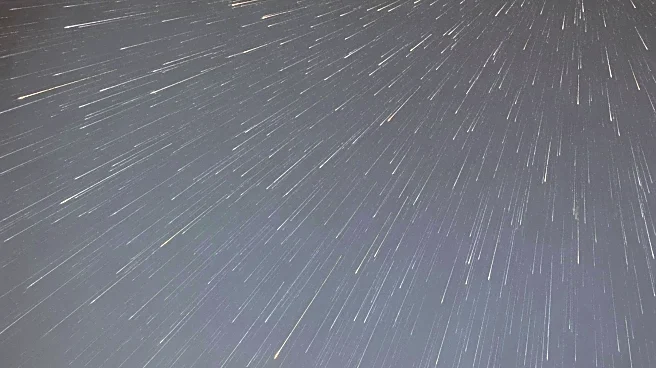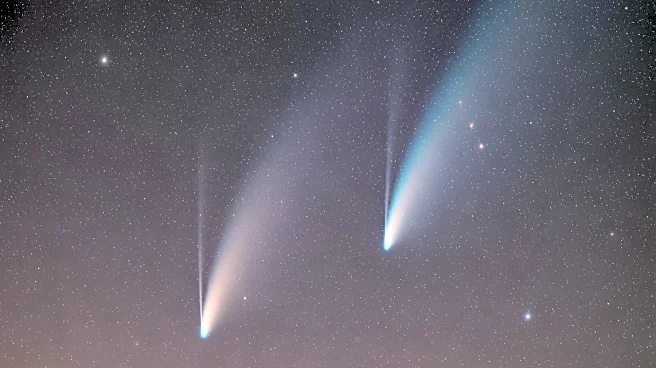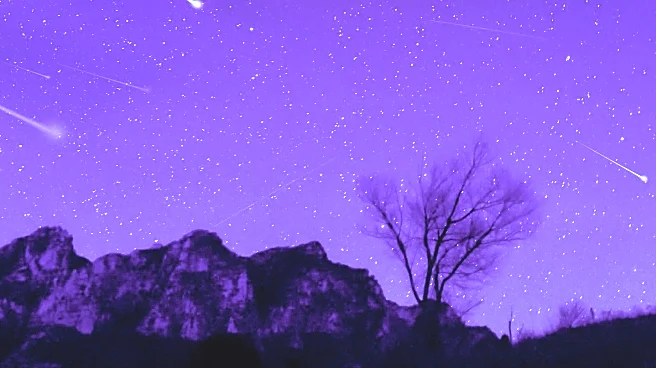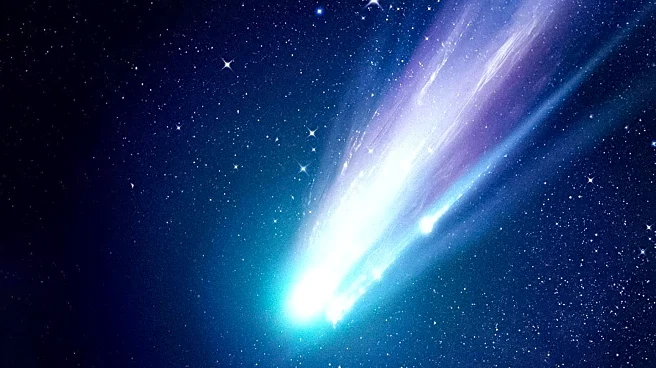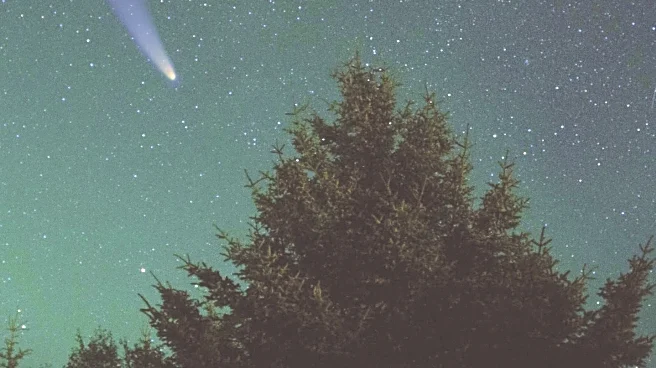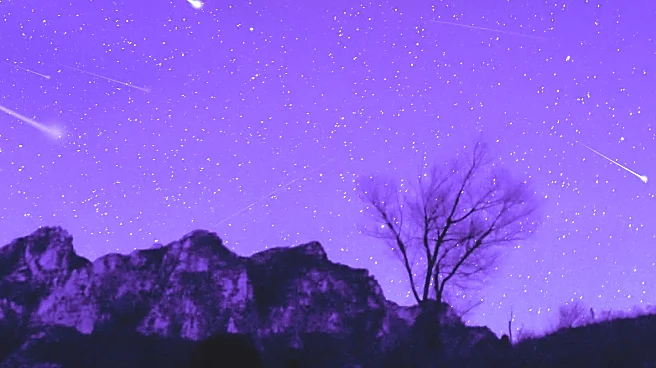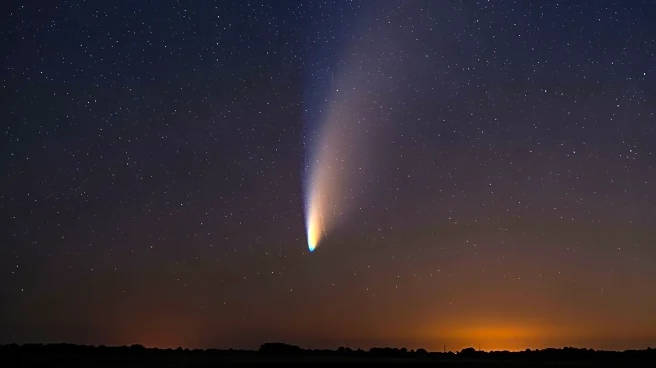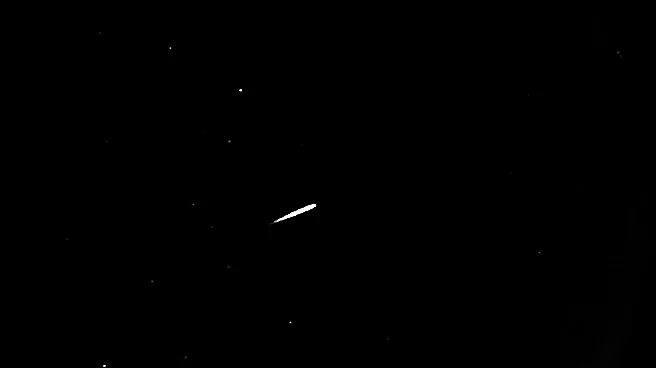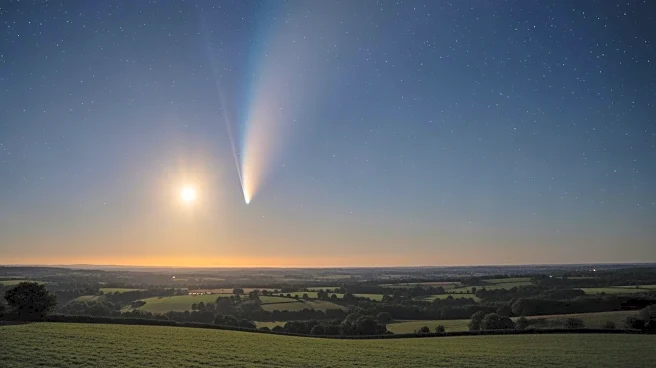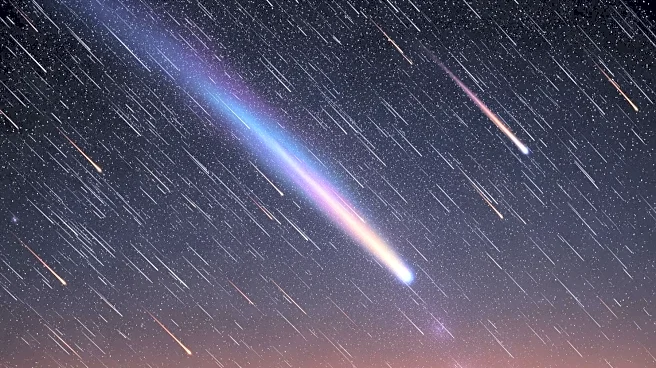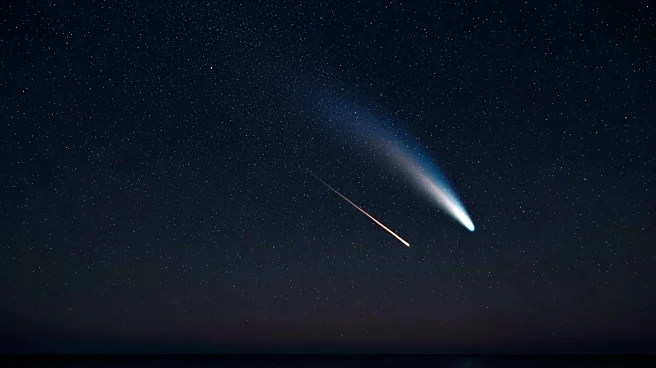What's Happening?
The Orionid meteor shower is set to peak in the early morning hours of October 21, offering a spectacular display of meteors originating from the constellation Orion the Hunter. Astronomy magazine Editor
Emeritus Dave Eicher encourages observation between midnight and 4 a.m. The Orionids are known for their bright and fast meteors, providing a visual treat for stargazers. The shower is expected to continue for at least a week post-peak, allowing ample opportunity for observation.
Why It's Important?
Meteor showers like the Orionids offer a unique opportunity for public engagement with astronomy, sparking interest in celestial phenomena. Observing meteor showers can inspire curiosity and appreciation for the night sky, promoting awareness of astronomical events. Such natural displays also provide educational opportunities for schools and amateur astronomers to learn about the origins and characteristics of meteors.
What's Next?
Stargazers are encouraged to find locations with minimal light pollution to maximize visibility of the meteor shower. Astronomy enthusiasts and educators may organize viewing events to share the experience and knowledge about meteor showers. The continued observation of the Orionids will contribute to understanding the dynamics of meteors and their interaction with Earth's atmosphere.
Beyond the Headlines
The Orionid meteor shower highlights the beauty and complexity of celestial events, offering a reminder of the vastness of the Universe. It also underscores the importance of preserving dark skies for astronomical observation, advocating for measures to reduce light pollution. Such events can foster a sense of connection to the cosmos and inspire future generations to explore the wonders of astronomy.
